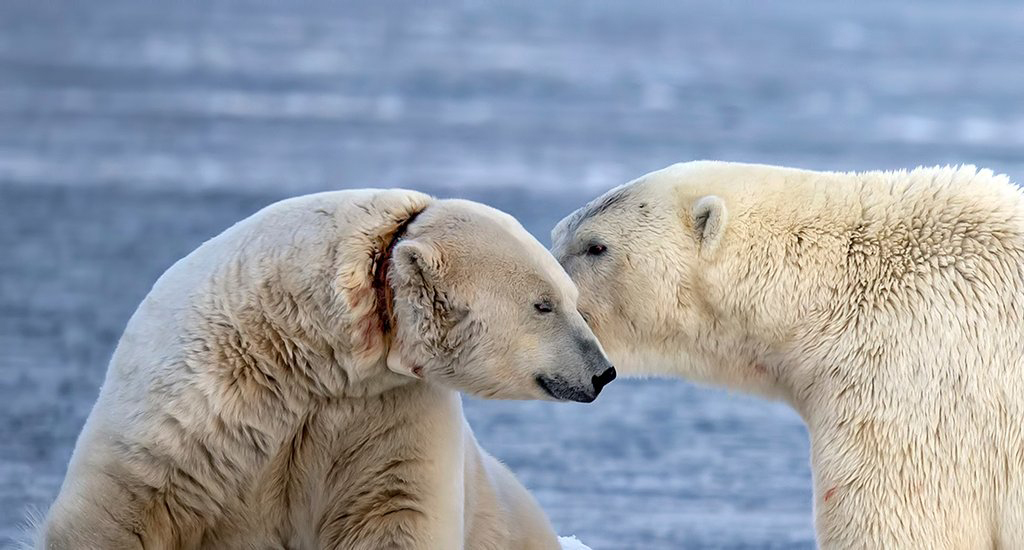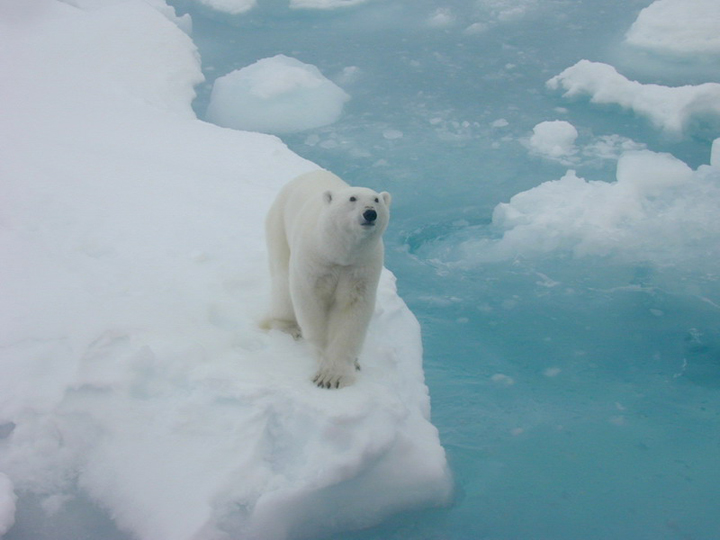Polar bears have been in the limelight recently, often the “poster-bear” of Earth’s changing climate. But now one bear is calling attention to how science is keeping an eye on polar bear populations in the north.

The image of the polar bear — which has mysteriously been nicknamed “Andy”on social media — was shared on Twitter in October. The photo shows a collar around its neck with what appears to be blood. Many believe that the collar is digging into the bear’s neck, causing it to suffer.
https://twitter.com/SusanAdie1/status/664507089331593216/photo/1
The photo has even elicited an online petition calling for the removal of the collar.
But the reality behind the collar isn’t as simple as one might expect.
“I’m not trying to downplay it. But we don’t actually know if there’s any injury,” said Andrew Derocher, polar bear researcher and professor in the department of biological sciences at the University of Alberta said. He believes that the polar bear in question is likely his. Derocher has been studying polar bears and how they interact with sea ice and what that could mean for the future of the population.
READ MORE: Startling image of emaciated polar bear: Sign of climate change?
Not surprisingly, Derocher — a scientist — needs more evidence than a single photo. He points out that, while the collar looks too tight and there is what is perceived to be blood around it, that doesn’t mean that it’s the polar bear’s blood, or that it’s too tight.
- 2021 heat dome fuelled by climate change, intensified wildfire risk: study
- B.C. introduces legislation recognizing Haida Gwaii Indigenous title
- Whale experts confident B.C. orca calf will survive, find family if rescue plan succeeds
- Chemical plant shuts down after high benzene levels detected near Ontario First Nation
At this time of year, he said, the bears feed off whale carcasses, which involves a lot of blood; as well, it’s difficult for them to clean that area of their body. And while the collar looks like it’s digging into its neck, the fur of a polar bear can measure from four to five centimetres long, giving the appearance of something digging into it.
Can it be removed?
Derocher has been singled out on social media for not doing enough to remove the collar. But the fact is that this has been a unique situation: the collar, which was likely outfitted more than a year ago, has malfunctioned: These collars can be released remotely, however, this collar has failed to release and is no longer tracking.
In a written statement provided to Global News on the issue, Paul Crowly, the vice-president of the Arctic Program at WWF Canada said, “WWF is concerned about reports of the polar bear with the too tight collar on the southern coast of the Beaufort Sea…. Fortunately, it is very rare for individual animals to be harmed by collaring. The knowledge that researchers gather from collaring and tracking is directly used to develop measures of conservation for entire populations.”
Derocher agrees, “This is an extremely rare event; so rare that we’ve never seen anything like this before.” And the research that is being done on the movement of these polar bears is valuable in moving forward with climate change concerns in an area that is warming at twice the rate of the rest of the planet.
And while people are calling on Derocher and the University of Alberta to find the bear and remove the collar, sea ice has begun to form, making it difficult to locate it.
“The issue here is the bear could be anywhere from Banks Island to eastern Russia,” he said.
“This is never anything I’d ever wish to do to any animal,” Derocher said. But the fact is, with any animal research, there is an inherent risk to an animal, he said. The ultimate goal, however, is to help them.
WATCH: How polar bears are monitored (WWF)
Derocher is also dismayed that it took so long for the image to reach social media. Had it been released to the proper authorities — in this case Alaska, as that’s where it was spotted — officials could have gone out to find the bear and manually released the collar. (The U.S. Geological Survey told Global News that they were certain the polar bear in question was not one of theirs.)
But it took almost two weeks for it to get out, and by that time, the bear hadn’t been seen. Now, the Arctic is bathed in 24 hours of darkness, making the task almost impossible.
But Derocher believes that if the bear really wants the collar off, the massive animal will be able to remove it himself.
“It will fall off. And maybe it already has and that’s why the bear hasn’t been spotted again,” Derocher said. “I’m confident that the bear will not suffer from this in the long term. I’m most concerned about the animal. But there are limits to what we can do.”



Comments